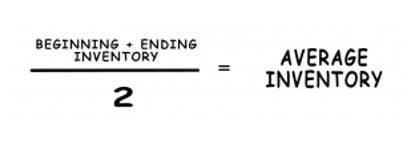How Should I Pay Myself? Owner’s Draw Vs Salary Business Law

Too many months of small commission, however, may add up to a significant amount of debt for the employee. Hourly wages are paid based on the specific number of hours spent on the job, and usually have a time card system or invoice to track cumulative hours worked. A salary pays employees based on an expertise level or the quality of their work, rather than the time it took to complete it, and is expressed on an annual basis. Whether a salaried employee works 40 hours or 65 hours per week, he will receive the same amount of compensation. The annual salary will not change unless the employer renegotiates the payment contract by giving the employee a raise or pay cut.
Owner’s draw vs. salary: how to pay yourself as a business owner

Let’s say you operate as a sole proprietor, partnership or LLC that has not elected to be taxed as an S corporation. With a salary, you’ll receive payments at regular intervals (weekly, bi-weekly, or monthly) through a formal payroll process. This provides consistency for your personal finances and may make personal budgeting easier.

How to pay yourself as an S Corp

And again, take only from your company profits, draw vs salary not your overall revenue. Sole proprietors usually take money from the business in the form of a draw, which then reduces your owner’s equity. You are taxed for the overall profit of your business, no matter how much you actually draw, and you have to file it on your income tax return for the IRS.
- You determine your reasonable compensation and give yourself a paycheck every pay period.
- Large draws can put your business in the red and leave you at risk of closing.
- The bad news is these draws won’t reduce your taxable income like a salary would.
- If you decide the Limited Liability Corporation (LLC) company structure is right for you, here are the steps to take in order to correctly pay yourself as the owner of an LLC.
Step #5: Determine how much to pay yourself
The two primary methods most small business owners will use are salary and/or owner’s draw. Your business type significantly impacts Retail Accounting which options are available to you and how you’ll pay taxes. An owner’s draw involves withdrawing money from your business profits to pay yourself.

As you bring family into company operations, get familiar with the benefits, legal guidelines, and pitfalls to avoid when hiring your child in your business. Of course, you also have to consider your business size and location. If you used to work at a major corporation in the city, that amount would likely be too large to justify for a small startup in a more rural location. Make sure to keep a paper trail documenting your company’s performance and expenses so you can justify your wages if need be.
- S-Corp business owners can also take draws, but not in place of a reasonable salary.
- A well-thought-out tax plan helps you stay financially secure in the long run.
- Here’s a closer look at the implications of using different entity types.
- When you’re self-employed, you have to deal with taxes year-round, not just in the spring.
- An owner’s draw is when the owner takes funds from the business for personal use.
- For many businesses making over $60,000-$80,000 in profit, the answer is yes.
- But if you take a draw or salary that’s too large, you risk crippling your business.
An LLC with one member (a single-member LLC) is treated as a “disregarded entity” unless it elects to be taxed as a corporation by filing Form 8832 with the IRS. This means the IRS ignores the LLC for tax purposes and treats it as an extension of the owner. She has more than 15 years of writing experience, is a former small business owner, and has managed payroll, scheduling, and HR for more than 75 employees. After you settle on the best approach to paying yourself, the lingering question to answer is what exactly constitutes “reasonable compensation” in the bookkeeping IRS’ eyes? After all, the guidance from the government tax authority is that the pay should be reasonable. The major difference from an S-corp is that a C-corp usually should not allow owners to take draws.
